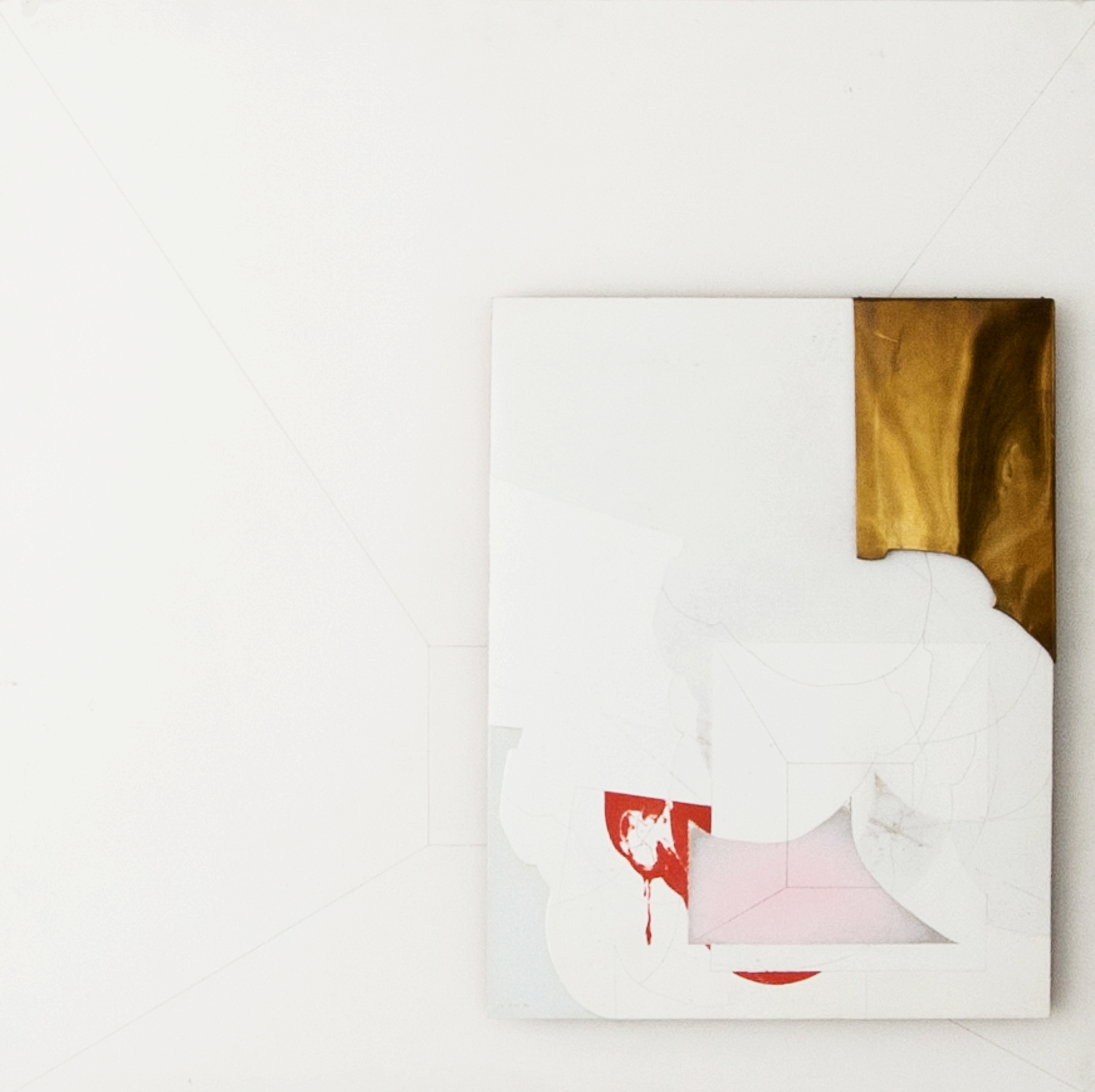Jiří valenta
6. august 1936 - 11 july 1991
The selection of Jiří Valenta´s works, for the joint exhibition with Magdalena Jetelová, is not in any way accidental. Both presented artists left their homeland and lived for many years in exile in Germany. While Magdalena Jetelová in her series called Implants maps out the patterns of architectural spaces in its spatial tangle, Jiří Valenta, through a similar system of connectors and lines, examine the essence of human existence.
In the late 1950s, Jiří Valenta had the opportunity to examine the abstract composition of F. Kupka. He was touched by its spirituality and colourfulness. Since then, he begins in his painting to work with matter, space and light and embarks on the path of abstract, non-figurative creation. He aims to define the place of a human being in our society as well as in cosmic order. This aspiration is even stronger during his time in exile (in 1968 he first goes to Vienna and then to Hof Dodau at Eutin in Germany). Ideologically he is following up on the Czech Middle Ages masters Theodorik of Prague and Master of the Wittingau Altar.
He admires the harmonious correlation of the sensual and spiritual components of their work, the unusual application of colour and the distinct painter's handwriting. They represent to him a connection with his homeland, a spiritual tradition and the environment from which it is eradicated. He creates cycle of paintings called Homage to Master Theodorik subtitled Nine Attempts at Hanging a Man in Space as well as Dodauer Billiard - Anthropometric exercises.
The painting surface intersects the tangle of fixed lines, through which emerge fragments of human body – head, lips, palm, mouth, breast nipple… A thin traces of human existence in the universe, his loneliness and his impossibility to overcome the limits of his own being, the destiny of his fate, the limits of his perception. The defined fragment of life, on which he he clings to prevents him from blending in with the white light of infinity.
In 1970, Valenta moves to live in Plön. He works on a cycle of votive panels of St. Krapp and the cycle of the votive panels for St. Lala. Both saints are fictitious, the figure of St. Krapp was borrowed from Samuel Beckett´s drama Krapp´s last Tape. There are several plan layers in each image. All of them, however, point to the Theodoric legacy, representing a journey to an absolute spiritual harmony, interrupted by a brief stay in our world. In 1971 the artist started to produce paintings and collages in which the human body is represented by bare feet. The inspiration was purely coincidental, based on a magazine picture of Jacqueline Kennedy.
The twisted thumb disturbs the perfect composition and brings up feelings of humanity, tenderness and vulnerability. The silhouette of feet is graved in various shades of white (white colour can be interpreted as a symbol for light, it fills and revives the space, smoothers the boundaries), surrounded by lines of fate and cosmic order. The principle of a higher dimension is represented by surfaces of paint, coloured foil, stainless steel or copper sheet.
From 1972 Valenta produces a large series of gouaches on tracing paper in which we can observe a deep spiritual contemplation.
In 1977/78 Jiří Valenta abandon his work on painting series and, until his death in 1991, he will focus on photography.
Biography
Born 1936, Prague
Studies:
1951-1953 Collage of Applied Arts, Prague
1953-1959 Academy of Fine Arts, Prague
Stipends:
1971 Emil Nolde Foundation, Germany
Other:
1960 Takes part in both unofficial “Confrontations I” and “Confrontations II”
1967 Member of the Union of Czechoslovak Artists
1968-1969 emigration to Germany
Jiří Valenta died in 1991 in Cologne.





